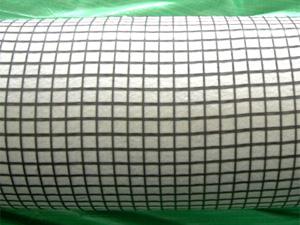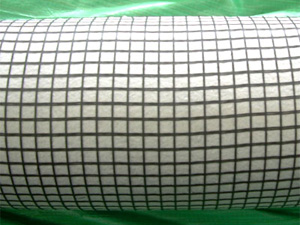




Warp knitted composite geotextile is a new type of geotextile made from glass fiber (or synthetic fiber) as the reinforcement material and composite with short fiber needle punched non-woven fabric
Warp knitted composite geotextiles are different from general woven fabrics.
When warp knitting composite, the warp knitting binding thread is used to repeatedly pass through the fiber layers of the warp, weft, and short fiber needle punched geotextile, making the three woven into one.
(II) Product characteristics
High tensile strength, low elongation, uniform longitudinal and transverse deformation, high tear resistance, excellent wear resistance, high water permeability, and strong filtration.
(3) Main functions of warp knitted composite geotextile
(2) Isolation function: Use geotextile to isolate different geotextile materials to form a stable interface, enabling them to play their respective characteristics and overall role according to design requirements.(3) Protective effect: Geotextiles have good puncture resistance, so they have good protective performance.
(4) Drainage filtration function: Geotextiles can allow water to pass through and block the loss of sand particles. Geotextiles are placed horizontally in channels with suspended particles to prevent fine mud particles and allow liquid to pass through.
(4) Engineering Application of Warp Knitted Composite Geotextiles
1. Used for anti filtration protection of retaining walls, road slopes, reservoir embankments, earth rock cofferdams, tunnels, and drainage ditches.2. Used for drainage on road slopes, subgrades, back of mountain protection walls along mountain roads, lower layers of railway ballast, and between highway subgrades and pavement.
3. Used for isolation of soft soil and block stones in building cofferdams, docks, and slope embankments, isolation and protection of the bottom and impermeable layer of landfill sites, isolation between landfill filter materials and garbage, isolation of asphalt pavement and roadbed, and enhancement of pavement
4. Used for layered reinforcement and drainage of slopes such as highways and railways, as well as for drainage reinforcement of backfill roadbed and embankments
5. Used for the protection of anti-seepage layers in artificial lakes, rivers, reservoirs, and other anti-seepage projects
6. Used for isolation between grassroots and green planting layers in landscape greening engineering.
7. Used for drainage and reinforcement of soft foundation to enhance the bearing capacity of the roadbed